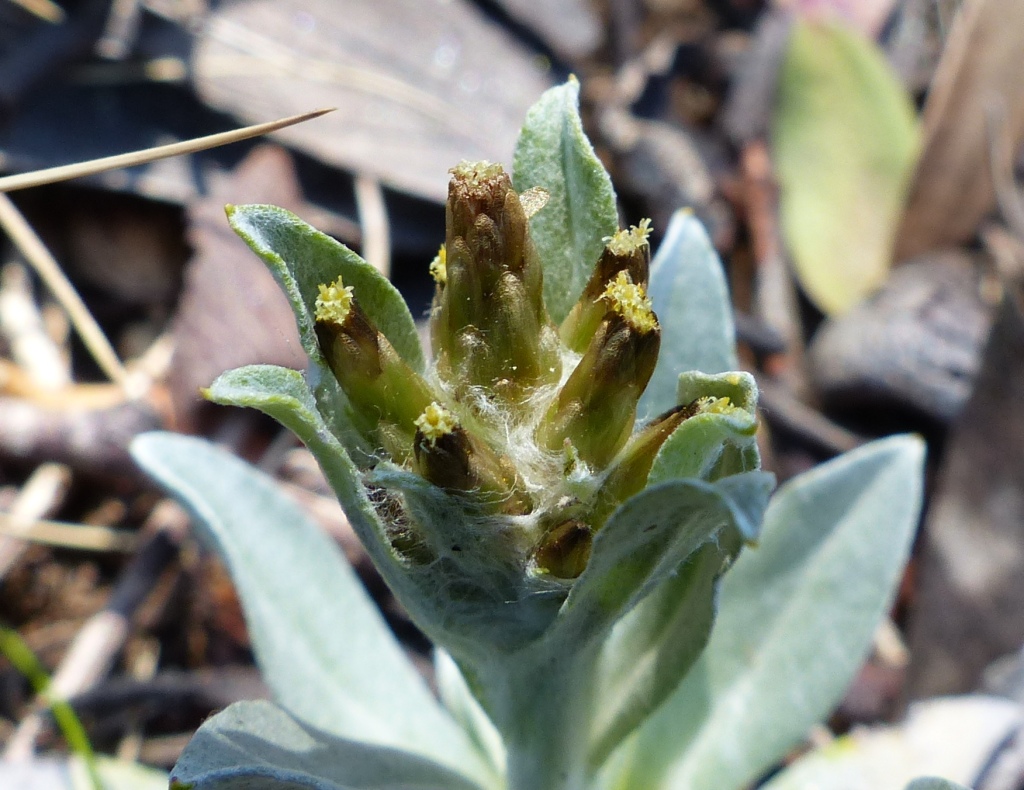Argyrotegium
Perennial herbs, usually forming mats but not stoloniferous; stems prostrate, leafy, rooting from nodes. Leaves basal and cauline, entire, alternate, tomentose on both surfaces, sessile with a long sheathing base usually at least half of leaf length. Capitula conical, solitary or few together in terminal clusters, sessile at anthesis becoming stalked as fruit develops. Involucral bracts spirally arranged, increasing in length from outer to inner; lamina of inner bracts papery, straw-coloured to pale brown. Florets all tubular, colourless or crimson, the outer filiform, female with 3- or 4-lobed corollas; inner florets bisexual, usually far fewer than female florets, with 5-lobed corollas; anthers shortly tailed. Style branches obtuse with hairs dorsally and apically. Cypselas obovoid, 1–1.5 mm long, glabrous or rarely with occasional hairs immediately below pappus; epidermal cells with a single, microscopic, distal papilla; pappus hairs entire or shortly ciliate, fused in groups or a fragile ring at base.
4 species, all occurring in Victoria. Also in New Zealand.
Previously included in Euchiton but distinguished from that genus by a non-stoloniferous habit, the absence of proximal papillae on cypsela epidermal cells, the mostly glabrous cypselas and long sheathing leaf bases (Ward et al. 2003). ITS nuclear DNA sequences also suggest that Argyrotegium may be closer related to some Australian Ewartia species than it is to Euchiton, providing further justification for its removal from Euchiton (Breitwieser et al. 1999).
 Spinning
Spinning
